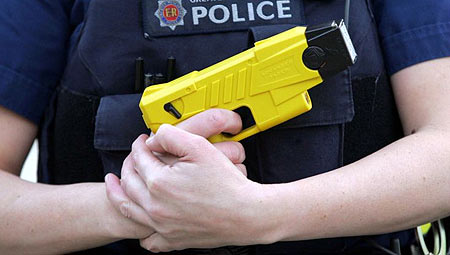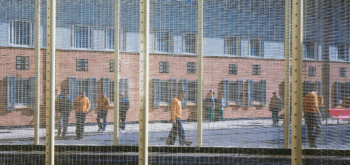Tasers and children: What’s the alternative?
 Using data provided by police forces, the Children’s Rights Alliance for England reports that between 2013 and 2015 there has been a 25% increase in the use of Taser against children. In turn this led to The Justice Gap headline ‘Police threatened children with Tasers on more than 500 occasions last year‘. Sounds bad, doesn’t it?
Using data provided by police forces, the Children’s Rights Alliance for England reports that between 2013 and 2015 there has been a 25% increase in the use of Taser against children. In turn this led to The Justice Gap headline ‘Police threatened children with Tasers on more than 500 occasions last year‘. Sounds bad, doesn’t it?
As parents and citizens of a civilised society we should be concerned enough to investigate further to see if police really are running around threatening children with Tasers.
The increase in use is relatively simple to deal with. The fact is there are more Taser trained officers than there were a few years ago. All firearms officers carry Taser as a ‘less lethal option’ and there are many examples of individuals who are alive today because armed officers had the option to use Taser instead of a firearm. In addition, all forces now select and train officers, who are not firearms officers, in the use of Taser. Overall the numbers of officers who are trained in the use of Taser is approximately 10%.
Next let’s deal with ‘threatened’. Police record data on Taser ‘use’ for the Home Office, there is no hiding place as the device captures use and this has to be regularly downloaded. Use is subdivided into seven categories; drawn (removed from the holster), aimed (pointed at a person), red dot (sighting system projects a red dot onto the target), arched (electricity passes across the probes to make a warning noise), drive stun (where the probes, with no cartridge attached are pressed against a person’s body) and fired and angle drive stun (fired means the barbs have been discharged at someone, angle drive stun means that one barb has connected and the weapon is pressed against the body to complete a circuit).
The most controversial use relates to drive stun as this relies solely on pain compliance whereas firing the cartridge causes ‘neuro muscular incapacitation’. Officers are made aware of drive stun during their training, but it does not form part of their formal training and accreditation. Taser is effective to a maximum range of 21 feet, in reality wind and the fact that targets are rarely standing still means that the effective range is less than this as both barbs need to connect with the skin or clothing in order to work.
Significantly in over 80% of Taser uses, the weapon is not discharged. The presence of the weapon or aiming it with verbal warnings is usually enough to ensure compliance. All use has to be reported and justified according to the law governing police use of force. The lawfulness of its use will be judged on necessity and proportionality against the threat presented and not on an assessment of the age of the individual.
Next let’s deal with ‘children’. The Justice Gap headline conjures up images of sweet, innocent kids being threatened by the police. The truth is very different. Here are some typical examples:
Police were called to deal with a 17 year old male who had set fire to a property and had locked himself inside and was threatening to kill himself and the officers. Officers forced an entry and the male came towards the officers with the knife, ignoring their verbal warnings. Taser was discharged and he was safely detained. He was later sectioned under the Mental Health Act. A double whammy for the armchair critics, a ‘child’ and someone with mental health issues.
A 16 year old male committed a robbery where he put a knife to his victim’s throat. He ran towards officers and would not comply with verbal warnings, as a result Taser was fired and he was safely detained.
A 14 year old male threatened to kill members of his family with a knife. When officers arrived he was still believed to be in possession of the knife, officers tried to reason with him, he was non compliant and was shouting at them from behind a locked door. The officers opened the door with keys provided by the family and drew Taser as a contingency, the weapon was not pointed at the individual who became compliant and was arrested.
A female contacted police to report that her 11 year old son had threatened her with a large kitchen knife. Officers believed that the male could be self harming and they forced an entry into the property. The male was found hiding, still in possession of the knife which he pointed at the officers. The male was red dotted at which point he dropped the knife and was safely detained.
Looking at these examples through a police lens, I have no issues with the first three. The fourth is controversial as the child was only 11, but what was the alternative? Critics, who may never have to face such a difficult scenario might feel that they could have talked him round, but if he is pointing the knife at you or could use it to harm himself, what would you do, physically restrain him and how would you do this safely?
Police use of Taser is heavily regulated and scrutinised, this is especially so where children or people with mental health issues are concerned and rightly so. Taser is a weapon, it is not a risk free option and its deployment and use should be subject to public scrutiny. The Justice Gap is not alone; there have been many alarming articles in the press concerning its use. Where these articles fall short is none of them offer any alternatives, they imply criticism of the police for putting themselves in harm’s way to protect the public without suggesting how it should have been done.






